Hermannia hyssopifolia
| Botanical Name | Hermannia hyssopifolia |
|||||||||||||||||||||||||||||||
| Family | Malvaceae - The hibiscus and cotton family. |
|||||||||||||||||||||||||||||||
| Pronunciation | her-MAWN-ee-uh hiss-sop-ih-FOH-lee-uh |
|||||||||||||||||||||||||||||||
| Common Name(s) |
English: Eight-day Healing Bush
IsiXhosa: inceba
|
|||||||||||||||||||||||||||||||
| Plant Group |
|
|||||||||||||||||||||||||||||||
| Plant Size |
|
|||||||||||||||||||||||||||||||
| Position |
|
|||||||||||||||||||||||||||||||
| General Information |
|
|||||||||||||||||||||||||||||||
| Specific Information | Hermannia hyssopifolia forms an upright to rounded, much branched shrub with long, slender, purple to reddish stems. The smallish, oblong leaves are a pale grey-green, are slightly hairy and may be toothed at the tips. Once flowering is over, the seeds form inside the rounded calyx which becomes papery when dry, falls off and is blown away by the wind. In the wild, the shrub does not survive a burn but many seedlings will spring up to take the place of the dead plants. The plants are often grazed by stock. |
|||||||||||||||||||||||||||||||
| Ad Break | ||||||||||||||||||||||||||||||||
| Flowers | ||||||||||||||||||||||||||||||||
| Description | five tiny petals held in a tight rosette by an urn-shaped, balloon-like calyx, held in loose clusters at the ends of branches |
|||||||||||||||||||||||||||||||
| Season |
|
|||||||||||||||||||||||||||||||
| Colour |
|
|||||||||||||||||||||||||||||||
| Growth Rate |
|
|||||||||||||||||||||||||||||||
| Plant Uses |
|
|||||||||||||||||||||||||||||||
| Distribution and Habitat | in the Western Cape, from the Cape Peninsula, extending into the the Little Karoo and into the Eastern Cape, in stony granite or clay soils, usually on moist or sheltered south-facing slopes but occasionally on flat ground in seeps |
|||||||||||||||||||||||||||||||
| Planting Suggestions | Not having been a popular garden subject, there is little literature about growing Hermannia hyssopifolia. In general, choose a reasonably damp or well-watered part of the garden in a semi-shaded position. For best results, a sandy loam mixed with compost would be best, with a good layer of mulch to retain water. (The photos above show my specimen, planted in dry sandy-clay-limestone soil without compost and in full sun.) Prune the shrub lightly after seeding but do not cut back hard or the plant will not recover easily. Propagate from cuttings taken from new growth in late winter or early spring, or from seed sown in autumn. |
|||||||||||||||||||||||||||||||
| Lorraine's Garden Notes | May 2013: Although all references cite this plant as flowering in spring, the specimen in my garden produced its best flowers in autumn, with some flowers all year round.. |
|||||||||||||||||||||||||||||||
| Medicinal Uses | Hermannia hyssopifolia was used by the isiXhosa and later, the early settlers, as a blood purifier, as a remedy for syphilis and to make an ointment for a skin infection. Along with some other aromatic, shrubby plants, its common name, Agtdaegeneesbossie, meaning Eight-day healing bush, supposedly produced a cure within eight days. |
|||||||||||||||||||||||||||||||
| Ad Break | ||||||||||||||||||||||||||||||||


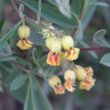
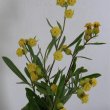
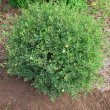
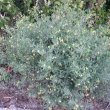
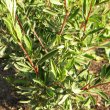
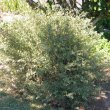


Discuss this plant
Share knowledge, ask a question or give an experience.